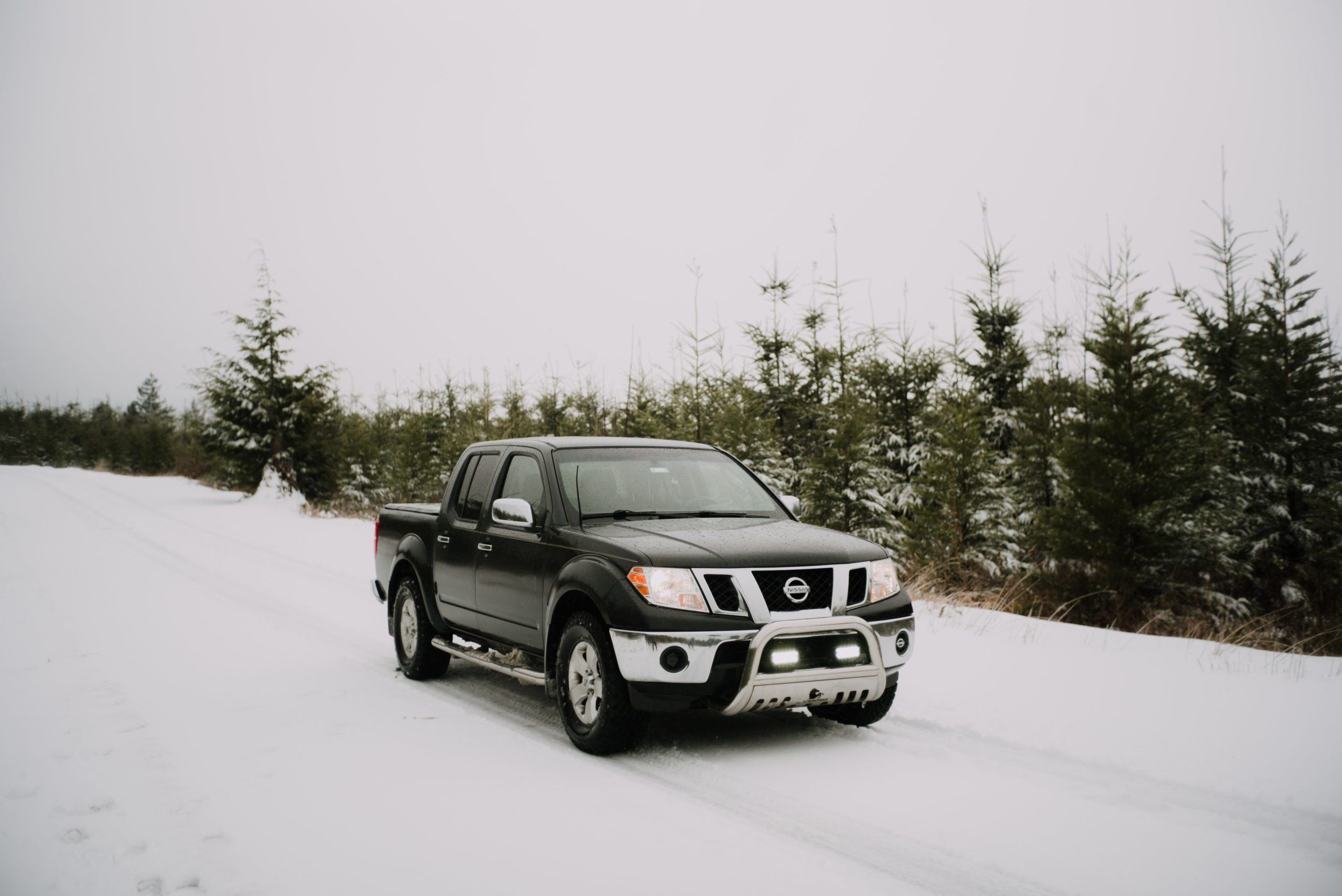During the winter months, road conditions can become dangerous in a matter of minutes. It doesn’t take much wintry precipitation to make St. Louis roadways slippery, and all too often, drivers are not cautious. When the treacherous weather makes its arrival, being prepared will not only ease your mind, but will also keep you and your family safe. Plus, should you ever be involved in an auto accident this winter, the professionals at Auto Beauty Specialists will work to return you to the road as soon as possible.
Tips for Driving in Winter
There’s no doubt that a midwestern winter will bring with it frigid temperatures. As you travel to your various destinations, it’s important to be prepared for whatever the weather will throw at you. Keep these tips in mind before you embark on your journeys to ensure winter driving safety:
- Ensure your winter car emergency kit is well stocked with warm clothes, a flashlight, car scraper, brightly colored cloth, shovel, food, water, necessary medications, jumper cables, cell phone charger, and blankets.
- Fill up or plug it in. Keeping your gas tank full during winter prevents condensation from freezing within it, as well as keeps you warm should you be caught in traffic for hours. It’s also recommended to charge your electric vehicle at night in case your commutes take longer than expected.
- Do not warm up your vehicle in an enclosed area, such as your garage. Doing so increases the risk of carbon monoxide seeping into your vehicle’s cabin, which can be fatal.
Tips for Driving in the Snow
According to research conducted by the AAA Foundation for Traffic Safety, winter storms, bad weather and sloppy road conditions are a factor in nearly half a million crashes and more than 2,000 road deaths every winter. Even if you can drive well in the snow, it’s wise to stay cautious and alert, as well as wear your seatbelt at all times. Below are some pointers to keep in mind as you venture out this winter:
1. Drive Slowly
Snowy, icy road conditions make it difficult to stay in control of your vehicle. The faster your car is going, the less reaction time you have to stop. Although driving slowly means your travel time is lengthened, adjusting your speed to account for lower traction will help keep you safe and in control. If you’re ever uncertain about the current road conditions, a good rule of thumb is to travel 10 miles per hour under the speed limit.
2. Accelerate and Decelerate Slowly
Just as it’s advised to drive slowly in general, so too is it wise to be gentle with your accelerator and brakes. Any sudden movements can result in skidding or slipping due to a loss of traction. Therefore, apply the gas lightly to regain your grip, and give yourself plenty of time to stop at a stoplight by gently pumping your brakes. It’s also not advisable to use cruise control, as you must be able to account for changing conditions.
3. Keep Moving
When the road conditions are less than ideal, it takes more inertia to regain momentum after a complete stop. It’s much easier to gradually increase your speed while your vehicle is in motion. If you’re able to keep moving while approaching stop signs and stop lights, do so, as it will help prevent skidding and slipping. Additionally, avoid stopping on a hill if possible. Gaining traction and building momentum are difficult tasks when the roads are not in a dry condition.
4. Increase Your Following Distance
While tailgating the vehicle in front of you is not advised during dry conditions, it is certainly frowned upon in winter weather. Since it is more difficult to stop your vehicle on slick roads, increasing your following distance to eight or ten seconds gives you the space you need should you be required to stop. Plus, doing so keeps yourself and other drivers safe.
5. Know Your Vehicle
Most newer vehicles come with standard safety features equipped for the snowy roads, such as anti-lock brake systems (ABS). Anti-lock brakes allow you to steer in times of emergency by restoring your tires’ traction. Another safety enhancement is traction control, which helps your vehicle grip the snowy, icy, or wet roads, particularly in a stopped or slowed position. Take advantage of your car’s safety features while venturing into winter weather.
6. Stay Home If You Can
The best way to be safe while the roads are dangerous is to stay home and avoid driving altogether. Only drive if it is absolutely necessary. Be aware of the weather forecast and plan your travel around the snow and ice.
How to Get Your Car Out of a Snow Bank
If you find yourself lodged in a large pile of snow, there are a few things you can do to free your vehicle:
- Clear your exhaust pipe. If the exhaust pipe, located in the vehicle’s rear, is clogged with ice and snow, carbon monoxide can seep into the car’s interior and cause carbon monoxide poisoning. Therefore, the first step you should take is to ensure the area is clear.
- Dig as much as you can. Using the shovel within your winter car emergency kit, dig and scoop snow away from all tires and from underneath the vehicle. Doing so reduces the amount of snow you’ll have to deal with when attempting to move.
- Avoid stomping on the gas. Revving your vehicle on a snowy surface only makes getting out more difficult. Your tires will move rapidly in place, creating heat and friction that will melt the snow for a split second before freezing it again.
- Rock the vehicle from side to side. If others are around to help you, sit in the driver’s seat to slowly accelerate and have them move the vehicle back and forth to dislodge from the snow bank. In the case that you’re by yourself, using drive and reverse functions can create the same effect.
What to Do If You’re Stranded in a Winter Storm
Before heading into the snow, inform another person that you are leaving, the route you will be taking, and your destination. Therefore, if you become stranded, others will be able to find you. Below are some tips on what to do if you’re stranded in a winter storm:
- Call for help. The first thing you should do in any emergency situation is to call for help, whether that be a tow company, 911, or a family member with a pickup truck. Be certain to keep your portable phone charger nearby, as cell phones tend to quickly lose battery in the cold.
- Stay with your vehicle. Avoid walking into a winter storm. If the snow or sleet picks up, you may not be able to locate your vehicle again. Your car is also a temporary shelter and staying within it will not only keep you warm, but it will also allow rescuers to find you.
- Be visible. Place a brightly colored cloth from your winter car emergency kit on your vehicle’s antenna or within a rolled up window to signal distress to other drivers. At night, be sure to utilize your vehicle’s dome light, as it does not use significant amounts of electricity and will allow crews to locate you.
- Preserve fuel. When the conditions are treacherous, you may have to stay in your vehicle for a long period of time. To preserve fuel, only run your engine long enough for your heater to warm the car’s interior. The stopping and starting of the engine will save energy.
- Stay warm. Use blankets and extra winter clothing that are in your emergency kit to shield the cold. Other items you can use include floor mats, newspapers, and maps.
- If digging, don’t overexert yourself. If you believe you will be able to regain traction after digging around your vehicle, listen to your body. If you become tired, rest in your car’s interior. Be sure to bundle up before digging to avoid frostbite.
Driving on Ice Tips
What you need to know in order to stay safe on icy roads is similar to the advice offered for traveling in the snow. However, a few tips are unique to ice-covered roadways:
- Do not be overconfident about traction. A four-wheel or all-wheel drive vehicle has the same traction on ice as front-wheel or two-wheel drive vehicles. Therefore, don’t assume that your car’s capabilities make it better on ice, as that will only cause a lack of control should you begin to slip.
- Avoid passing other vehicles. Often, when we pass other drivers on the road, we accelerate quickly in order to return to our lane. Doing so on icy roads, however, will cause you to spin. Therefore, it’s safest to remain behind the vehicle in front of you and keep your distance, no matter how slowly they are traveling.
- Your car’s thermometer does not indicate the pavement’s temperature. As helpful as a car thermometer can be, it does not tell you the temperature of the pavement itself. The air’s temperature warms quicker than that of concrete or asphalt, so even if your thermometer reads above freezing, it’s likely the road is still frozen. It’s always smart to err on the side of caution.
- Be aware of black ice. As thin, transparent ice that blends in with the pavement’s color, black ice is dangerous and hard to spot. The best way to handle driving over it is to ease the gas and brakes, as well as keep the wheel straight.
- Be extra cautious on bridges, ramps, and overpasses. Concrete structures above the ground are the first to freeze and the last to thaw due to a lack of insulation underneath. Even if all other roadways are clear, it’s likely that suspended concrete will be frozen, so be careful.
- Keep your defroster on high. During snow, sleet, and freezing rain, keep your defroster on high in order to melt any precipitation. Doing so allows you to have a windshield clear from ice and moisture.
Auto Beauty Specialists is Here to Help
At Auto Beauty Specialists, we understand that although you can be as cautious as possible during winter weather, there’s still a chance of an auto accident. Whether your aluminum is damaged from being lodged in a snow bank, or your windshield is cracked due to ice, we will repair your vehicle in a timely manner. You can count on our auto repair professionals to assist you in handling insurance claims and educate you on the next best steps. Stop by our Olivette repair shop or contact us to learn more today!

 Collision Repair
Collision Repair Fleet Collision Repair
Fleet Collision Repair Dent Repair
Dent Repair EV Repair
EV Repair Glass Replacement
Glass Replacement Aluminum Repair
Aluminum Repair




